Step into History: The Cultural Significance of Foshan Liang Garden
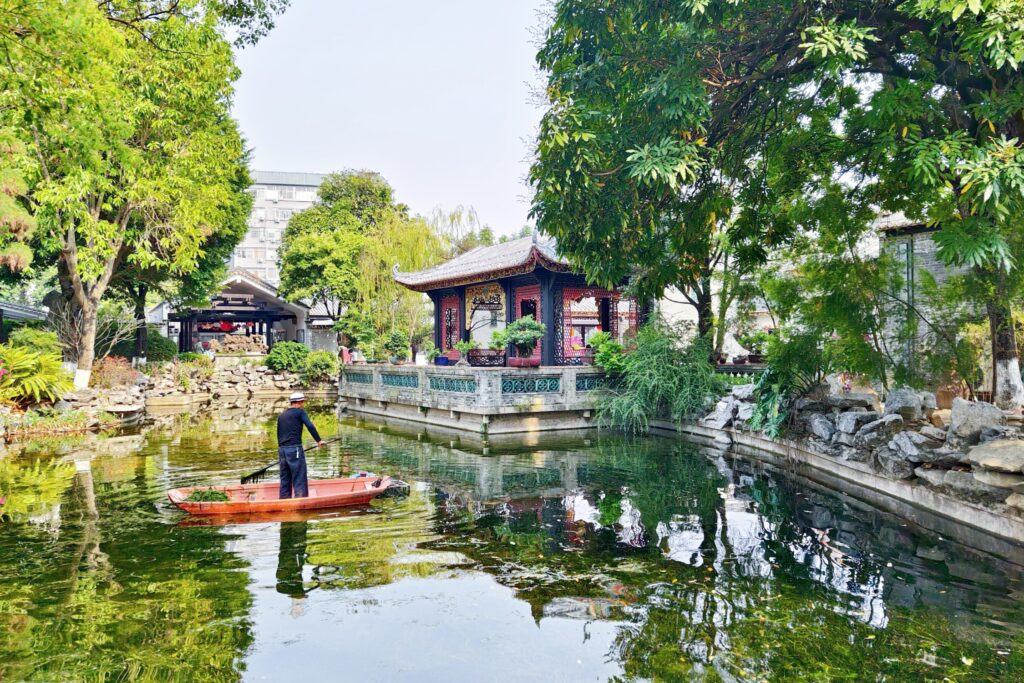
An Essential Guide to Visiting Foshan Liang Garden
Nestled in the heart of Foshan, Guangdong Province, Liang Garden (Liang Yuan) stands as a timeless testament to the beauty and artistry of traditional Chinese landscape design. Renowned as one of the “Four Great Gardens of Lingnan,” this exquisite retreat seamlessly blends the elegance of Qing Dynasty architecture with the tranquility of nature. Visitors are welcomed into a serene world filled with lush greenery, intricate pavilions, and reflective waters, all meticulously crafted to evoke harmony and peace.
As you meander through the garden’s winding paths, you will encounter captivating structures like the Twelve Stone Mountains and Fenjiang Thatched Cottage, each telling tales of the illustrious Liang family—scholars and poets who shaped Foshan’s cultural heritage. The garden’s design is a masterful fusion of Lingnan’s delicate aesthetics and the ethereal qualities of Jiangnan gardens, inviting exploration and contemplation.
Whether you are an avid history buff, a nature lover, or simply seeking a tranquil escape from the bustling city, Liang Garden offers an enchanting experience that captures the essence of traditional Chinese gardens. With its rich history, artistic landscapes, and serene ambiance, a visit to Liang Garden is not merely a stroll through a park; it is a journey through time, art, and nature, promising to leave you refreshed and inspired.
In This Guide
- An Essential Guide to Visiting Foshan Liang Garden
- The Rich History and Legends of Foshan Liang Garden
- Main Highlights: What You Absolutely Can’t Miss
- Planning Your Visit: A Practical Guide
- Tickets: Prices, Booking, and Tips
- How to Get There: A Complete Transportation Guide
- Local Cuisine and Accommodation Nearby
- Frequently Asked Questions
- Final Thoughts on Your Trip
The Rich History and Legends of Foshan Liang Garden
Nestled in the heart of Foshan, Liang Garden stands as a testament to the rich cultural tapestry of Guangdong Province. This enchanting garden, known as Liang Yuan, was established during the reigns of the Jiaqing and Daoguang emperors in the Qing Dynasty, specifically between 1796 and 1850. It is celebrated as one of the “Four Great Gardens in Lingnan,” showcasing the exquisite artistry and architectural finesse characteristic of southern Chinese gardens.
The garden was created by the esteemed Liang family, specifically by four renowned poets and scholars: Liang Huiru, Liang Jiuzhang, Liang Jiuhua, and Liang Jiutu. Their vision was to blend the delicate intricacies of Lingnan-style gardens with the open and ethereal qualities found in Jiangnan gardens. This thoughtful integration resulted in a space that invites visitors to experience tranquility amid flourishing flora, ancient architecture, and mesmerizing water features.
Throughout its storied existence, Liang Garden has undergone significant transformations. In 1982, the Foshan municipal government recognized its historical and artistic value and initiated restoration efforts. By 1990, the garden was designated as a provincial key protection unit for its cultural relics, ensuring its preservation for future generations. The restoration project, which commenced in 1994, adhered to the philosophy of “restoring the age-old as the age-old,” aiming to recapture the garden’s original beauty and essence.
Liang Garden is not just a visual marvel; it is steeped in legends and symbolic significance. The garden is home to several notable structures, including the “No Tired Depression,” “Hanxiang Pavilion,” and the “Twelve Stone Mountains.” Each of these features is imbued with poetic and cultural significance, reflecting the scholarly pursuits of its creators. The garden’s “Three Treasures”—its beautiful water bodies, unique rock formations, and famous inscriptions—further enhance its allure and importance in the cultural landscape of Foshan.
As you wander through its pathways, you may feel the echoes of history whispering through the trees, inviting you to imagine the lives of the poets and scholars who once sought inspiration within these serene confines. Liang Garden continues to be a cherished sanctuary, offering a glimpse into the elegance and sophistication of Lingnan culture—making it a must-visit for anyone seeking to understand the rich heritage of Foshan.
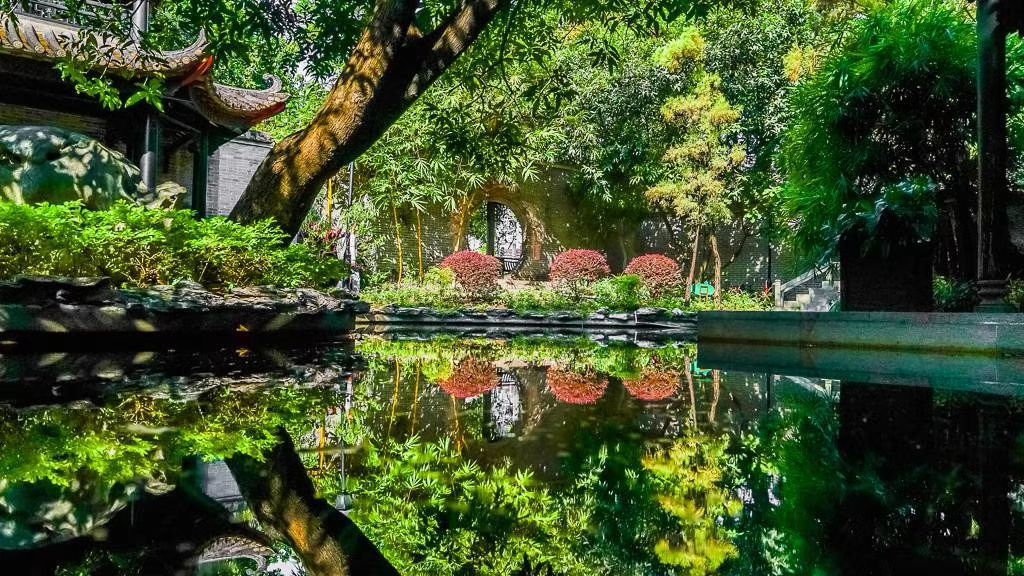
Foshan Liang Garden.
Main Highlights: What You Absolutely Can’t Miss
Nestled in the heart of Foshan, Liang Garden (Liang Yuan) is a sanctuary of tranquility and a masterpiece of Lingnan culture, celebrated as one of the “Four Great Gardens” of Guangdong Province. This garden not only offers a glimpse into the elegance of Qing Dynasty architecture but also immerses visitors in the rich cultural heritage of the region. Here’s a curated list of highlights you absolutely can’t miss when you visit Liang Garden:
1. The Exquisite Garden Layout
From the moment you step through the entrance, you’ll be captivated by the garden’s intricate layout. The design blends the delicate artistry of Lingnan gardens with the openness typical of Jiangnan gardens. Stroll along paths that meander past lush greenery, rockeries, and pavilions, each corner revealing a new picturesque scene.
2. Key Architectural Features
Liang Garden is home to several notable architectural structures that showcase the artistic flair of the Liang family.
– Twelve Stone Mountains: This distinctive feature is a collection of rock formations that create a stunning natural backdrop.
– Qunxing Thatched Cottage: A charming structure that reflects traditional building techniques and offers a serene spot to rest and enjoy the surroundings.
– Fenjiang Thatched Cottage: Known for its tranquil ambiance, it is an ideal place to appreciate the garden’s beauty while enjoying a moment of peace.
3. Cultural Heritage
As you wander through the garden, you’ll discover its deep cultural roots. The former owners, the Liang family, were renowned scholars and poets. Their legacy is evident not only in the garden’s design but also in the literary and artistic references scattered throughout the space. Engage with the stories of Liang Airu, Liang Jiuzhang, and other notable figures who shaped the cultural landscape of Foshan.
4. The Three Treasures of Liang Garden
Don’t miss the garden’s celebrated “Three Treasures”:
– Beautiful Water: The serene ponds and streams not only add to the garden’s aesthetic but are also vital to its ecological balance.
– Strange Stones: The unique rock formations are intricately placed throughout the garden, creating a natural art gallery.
– Famous Posts: These are poetic inscriptions and calligraphy that adorn various structures, highlighting the garden’s literary significance.
5. Seasonal Beauty
Liang Garden transforms with the seasons, offering a different experience each time you visit. In spring, cherry blossoms bloom; summer brings vibrant greenery; autumn showcases golden leaves; and winter offers a tranquil, misty landscape. Each season enhances the garden’s charm, making it a year-round destination.
6. Photography Opportunities
The garden’s stunning vistas provide endless opportunities for capturing memorable photographs. Whether you’re dressed in a traditional Hanfu or simply enjoying a leisurely day, the picturesque settings—complete with bridges, pavilions, and lush landscapes—make for perfect backdrops.
7. Relaxation and Reflection
Beyond its visual beauty, Liang Garden is a tranquil escape. Take a moment to sit by the water, listen to the gentle rustling of leaves, or simply breathe in the fresh air. It’s a place designed for reflection and rejuvenation, allowing you to disconnect from the hustle and bustle of modern life.
8. Accessibility and Convenience
Located conveniently in the Chancheng District, Liang Garden is easily accessible. With an average entry fee of just RMB 10 (free on Saturdays), it’s a budget-friendly destination that offers rich cultural experiences without breaking the bank.
Final Thoughts
A visit to Liang Garden is not just about seeing a beautiful landscape; it’s about experiencing a slice of history and culture that continues to thrive in Foshan. Whether you’re an avid gardener, a history buff, or simply looking for a serene locale, Liang Garden promises a memorable experience that resonates long after you leave. Don’t forget to bring your camera and sense of adventure!
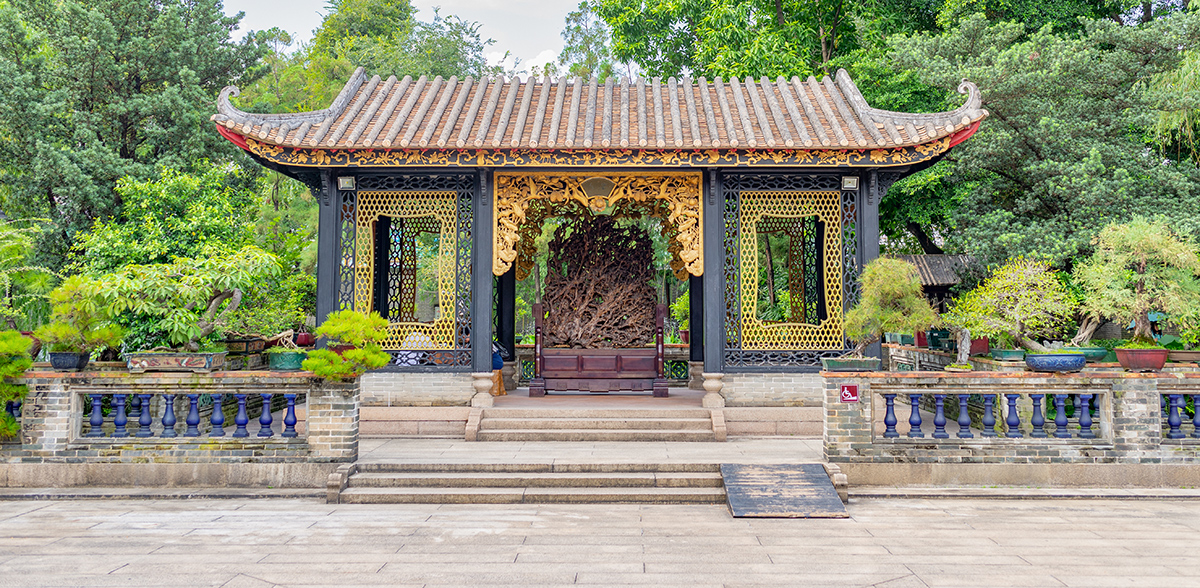
Foshan Liang Garden.
Planning Your Visit: A Practical Guide
Visiting Foshan Liang Garden is a delightful journey into the heart of traditional Chinese landscape design. This guide will help you navigate your visit to this historical gem, ensuring you make the most of your experience.
Getting There
Address:
No. 93 Pioneer Road, Songfeng Road, Chancheng District, Foshan City, Guangdong Province, China
Transportation:
Foshan is well-connected by public transport. The most convenient way to reach Liang Garden is by taking the metro to Zumiao Station, which is about a 10-minute walk away. Local buses and taxis are also readily available, making it easy to access the garden from various parts of the city.
Opening Hours
Liang Garden is open daily from 9:00 AM to 5:00 PM. Be sure to arrive at least 20 minutes before closing to fully enjoy the serene landscapes and architectural marvels.
Ticket Prices
- Standard Admission: Approximately RMB 10 (around $1.50 USD)
- Special Offer: Free admission on Saturdays.
Recommended Duration
Plan to spend 1-2 hours exploring Liang Garden. This timeframe allows for a leisurely stroll through the garden’s picturesque pathways, taking in the intricate architecture and serene natural beauty.
What to See
Liang Garden, one of the Four Great Gardens of Lingnan, is a masterpiece of Qing Dynasty design. Here are some highlights you won’t want to miss:
- Twelve Stone House and Qunxing Thatched Cottage: Marvel at the traditional architecture and intricate designs that reflect the artistic heritage of the Liang family, renowned scholars and poets.
- Fenjiang Thatched Cottage: A beautiful spot that illustrates the harmonious blend of nature and architecture.
- Rockery and Dense Forests: Walk through lush greenery and enjoy the tranquility that surrounds you.
- Three Treasures of Liang Garden: Don’t miss the beautiful water features, unique rocks, and renowned calligraphy that adorn the garden.
What to Bring
- Comfortable Shoes: The garden’s pathways can be uneven, so wear shoes suitable for walking.
- Camera: Capture the stunning landscapes and intricate details of the architecture.
- Water Bottle: Stay hydrated, especially if you’re visiting during the warmer months.
Additional Tips
- Best Time to Visit: Early morning or late afternoon is ideal for cooler temperatures and softer light for photography.
- Cultural Etiquette: Be respectful of the local customs, especially in areas designated for quiet reflection.
- Combine Your Visit: Consider pairing your trip to Liang Garden with nearby attractions like the Foshan Ancestral Temple or the Ancient Nanfeng Kiln for a full day of cultural exploration.
Nearby Amenities
After your visit to Liang Garden, you may want to enjoy a meal or relax in a café. Foshan is known for its delicious local cuisine, so be sure to try some traditional dishes nearby. Street vendors and local restaurants can be found within walking distance, offering everything from dim sum to fresh seafood.
Conclusion
A visit to Foshan Liang Garden is a wonderful way to immerse yourself in the rich cultural tapestry of southern China. With its stunning landscapes, historical significance, and serene atmosphere, you’re sure to leave with lasting memories and a deeper appreciation for Lingnan garden architecture. Enjoy your journey!
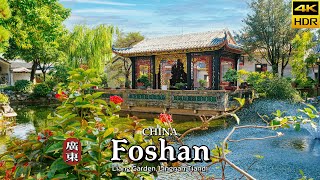
Foshan Liang Garden.
Tickets: Prices, Booking, and Tips
Visiting Foshan Liang Garden is a delightful experience, and planning your visit is straightforward when it comes to tickets and entry details.
Ticket Information
- Admission Fee: The standard ticket price is a mere RMB 10 (approximately $1.50 USD). This makes it an affordable option for travelers looking to immerse themselves in the serene beauty of one of Guangdong’s most celebrated gardens.
- Free Admission Days: If you’re visiting on a Saturday, you’re in luck! Admission is free, allowing you to explore the garden at no cost.
Opening Hours
- Daily Hours: Liang Garden is open from 9:00 AM to 5:00 PM. Be sure to arrive before 4:40 PM, as this is when the last entries are accepted, giving you ample time to wander through the lush landscapes and historical structures.
Booking Tips
- Advance Booking: While tickets can typically be purchased on-site, it’s advisable to check if any special events or peak tourist seasons require advance bookings. This can help you avoid long lines and ensure entry during busy times.
- Guided Tours: Consider joining a guided tour for a richer experience. Knowledgeable guides can provide insights into the garden’s history and architecture, enhancing your visit. Check local tourism websites or travel agencies for tour options.
- Combine Visits: Liang Garden is located near other attractions such as the Foshan Ancestral Temple and Nanfeng Ancient Kiln, making it easy to plan a full day of exploration. Look into package deals that may offer discounted rates for multiple sites.
Additional Tips
- Best Time to Visit: Early mornings or late afternoons are ideal for visiting. During these times, the light is perfect for photography, and the garden is less crowded, allowing for a more peaceful experience.
- What to Bring: Don’t forget your camera, as the garden boasts stunning landscapes and intricate architecture perfect for capturing memories. Comfortable walking shoes are also a must, as you’ll want to explore every corner of this enchanting space.
With these details in hand, you’re all set for an enjoyable visit to Foshan Liang Garden, where history, culture, and natural beauty await!
How to Get There: A Complete Transportation Guide
Visiting Foshan Liang Garden (佛山梁园) is a delightful journey into the beauty of Lingnan architecture and nature. To ensure your visit is smooth and enjoyable, here’s a comprehensive guide on the best transportation options to reach this cultural gem.
By Air
If you’re arriving from overseas, the nearest major airport is Guangzhou Baiyun International Airport (CAN), approximately 50 kilometers (about 31 miles) from Foshan. Upon landing, you have several transportation options:
- Taxi: A direct taxi ride will take around 60 minutes, depending on traffic, and will cost about 150-200 RMB (approximately $22-$30).
- Airport Shuttle: Look for the shuttle bus services that run to various destinations in Foshan. This is a cost-effective option, with prices ranging from 30-50 RMB ($5-$8) per person.
By Train
Foshan is well-connected by train, making it easy to travel from major cities like Guangzhou and Shenzhen.
-
High-Speed Train: If you’re coming from Guangzhou, take the high-speed train from Guangzhou South Railway Station to Foshan West Railway Station. The journey takes about 30 minutes and costs around 30-50 RMB ($5-$8). From Foshan West, you can take a taxi to Liang Garden, which is approximately 20 minutes away.
-
Regular Train: For those coming from other cities, check the China Railway website for train schedules and routes. Foshan Railway Station is centrally located, making it convenient to reach Liang Garden.
By Metro
Foshan’s metro system is another efficient way to navigate the city:
- Line 1: Take Metro Line 1 to Zumiao Station. From there, it’s about a 15-minute walk to Liang Garden. The metro ride from Guangzhou is approximately 40 minutes and costs around 6-10 RMB ($1-$2).
By Bus
For budget travelers, Foshan’s public bus system offers numerous routes that connect to Liang Garden:
- Depending on your starting point in Foshan, you can take bus routes such as K1, K3, or 102. Buses are frequent and affordable, with fares generally around 2 RMB (less than $0.50). Check local bus schedules for the most suitable route.
By Taxi or Ride-Hailing Apps
For a more direct and convenient option, consider using a taxi or ride-hailing service like Didi Chuxing:
- Taxis are readily available throughout Foshan and can be hailed on the street or booked via apps. A taxi ride from Foshan’s city center to Liang Garden will typically cost between 20-30 RMB ($3-$5).
Walking
If you’re already in the vicinity of the Chancheng District, Liang Garden is easily accessible by foot. Strolling through the city allows you to appreciate the local architecture and culture along the way.
Final Tips
- Opening Hours: Liang Garden is open daily from 9:00 AM to 5:00 PM, with the last entry at 4:40 PM.
- Admission Fee: The entrance fee is approximately 10 RMB (around $1.50), and it’s free on Saturdays.
- Best Time to Visit: Early morning or late afternoon can provide a more tranquil experience, away from larger crowds.
No matter which transportation method you choose, getting to Foshan Liang Garden is straightforward and allows you to immerse yourself in the rich cultural heritage of this beautiful region. Enjoy your visit!
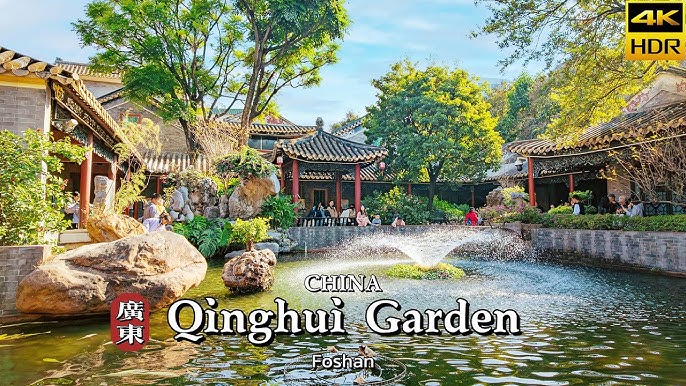
Foshan Liang Garden.
Local Cuisine and Accommodation Nearby
When visiting Liang Garden in Foshan, you’re not just stepping into a picturesque historical landscape; you’re also entering a culinary haven and a hotspot for comfortable accommodations. After exploring the serene beauty of the garden, you’ll want to indulge in local delicacies and find a cozy place to rest your head. Here are some great options nearby.
Savor Local Flavors
Foshan is renowned for its rich culinary heritage, particularly the flavors of Lingnan cuisine. Here are some must-try dining spots close to Liang Garden:
-
Yingji Wonton Noodles
Known for its delectable shrimp wonton noodles, this eatery offers a satisfying lunch option. The savory broth and perfectly cooked wontons make it a local favorite. -
Huiji Dessert Shop
After a savory meal, satisfy your sweet tooth at Huiji. Famous for its traditional desserts, be sure to try the pig trotter ginger stew and sesame paste desserts that offer a unique taste of Foshan. -
Yuwenle
For dinner, head to Yuwenle, where you can enjoy freshly grilled seafood BBQ. The vibrant atmosphere and flavorful dishes make it a perfect end to your day. -
Shunde Po Home Cuisine
This restaurant specializes in Shunde-style dishes, making it ideal for those looking to experience the local gastronomic culture. Expect tasty dishes that highlight the region’s culinary prowess.
Comfortable Stays
After a day filled with exploration and indulgence, relax in one of the nearby accommodations that promise comfort and convenience:
-
Poly InterContinental Foshan
Located about 20 minutes from Liang Garden, this five-star hotel offers modern amenities and stunning views of Qiandeng Lake. The hotel is relatively new and boasts excellent service, making it a top choice for families and travelers alike. With a buffet breakfast included, it’s a great way to start your day before heading out to explore. -
Foshan Shunde Marriott Hotel
Situated in the heart of Shunde, this hotel combines luxury with local charm. With spacious rooms, a fitness center, and an array of dining options, it’s perfect for both relaxation and adventure. Plus, it’s conveniently located for sampling Shunde’s famous dishes.
Whether you’re wandering through the enchanting landscapes of Liang Garden or enjoying the local culinary delights, Foshan offers a delightful blend of culture and comfort that will make your visit unforgettable.
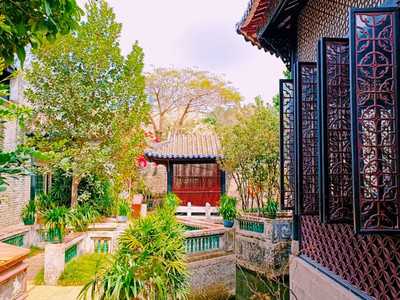
Foshan Liang Garden.
Frequently Asked Questions
1. What are the opening hours of Foshan Liang Garden?
Liang Garden is open daily from 9:00 AM to 5:00 PM. Please note that the last entry is at 4:40 PM, so plan your visit accordingly.
2. How much does it cost to enter Liang Garden?
The entrance fee is approximately RMB 10 per person. If you visit on a Saturday, you can enjoy free admission!
3. How long should I plan to spend at Liang Garden?
A visit typically takes between 1 to 2 hours, allowing you to explore the beautiful landscapes, historical architecture, and serene ponds at a leisurely pace.
4. Where is Liang Garden located?
Liang Garden is situated at 93 Pioneer Road, Songfeng Road, Chancheng District, Foshan City, Guangdong Province, China. It’s easily accessible by public transport or taxi.
5. What are the main attractions within Liang Garden?
Key highlights include the Twelve Stone House, Qunxing Thatched Cottage, Fenjiang Thatched Cottage, and the exquisite rockery and lush forests. Don’t forget to look out for the “Three Treasures of Liangyuan”: the beautiful water features, unique stone formations, and notable historical architecture.
6. Is Liang Garden suitable for families with children?
Absolutely! Liang Garden is a family-friendly destination. Children will enjoy exploring the lush greenery, discovering the various architectural features, and taking photos amidst the picturesque settings.
7. Are there any nearby attractions to visit after Liang Garden?
Yes! After visiting Liang Garden, consider exploring nearby attractions such as the Foshan Ancestral Temple, the ancient Nanfeng Kiln, or the Wong Fei-hung Memorial Hall, all of which offer rich cultural experiences.
8. What is the best time of year to visit Liang Garden?
Spring (March to May) and autumn (September to November) are the most pleasant times to visit, as the weather is mild and the garden is in full bloom. However, Liang Garden is beautiful year-round, offering a unique charm in each season.
Final Thoughts on Your Trip
Visiting Liang Garden in Foshan is more than just a stroll through beautifully manicured landscapes; it’s a journey into the heart of Lingnan culture and history. As you meander through its serene pathways, surrounded by the delicate architecture of the Qing Dynasty, you can almost hear the whispers of the poets and scholars who once walked these grounds.
Take a moment to immerse yourself in the tranquil atmosphere, where each corner offers a new perspective on nature’s beauty, from the intricate rockeries to the gentle flow of water. Whether you’re an avid photographer seeking the perfect shot or a history buff eager to uncover the stories behind the garden’s design, Liang Garden promises an enriching experience.
As you conclude your visit, reflect on the harmonious blend of artistry and nature that defines this stunning garden. It stands as a testament to the enduring legacy of Foshan’s cultural heritage, inviting travelers from around the world to appreciate its beauty and tranquility. So, as you leave Liang Garden, carry with you not just memories of its picturesque scenery, but also a deeper appreciation for the artistry of traditional Chinese gardens and the rich history that surrounds them. Your adventure in Foshan is just one chapter in a larger tale waiting to be explored—so keep wandering, keep discovering, and let the spirit of this enchanting place inspire your travels ahead.